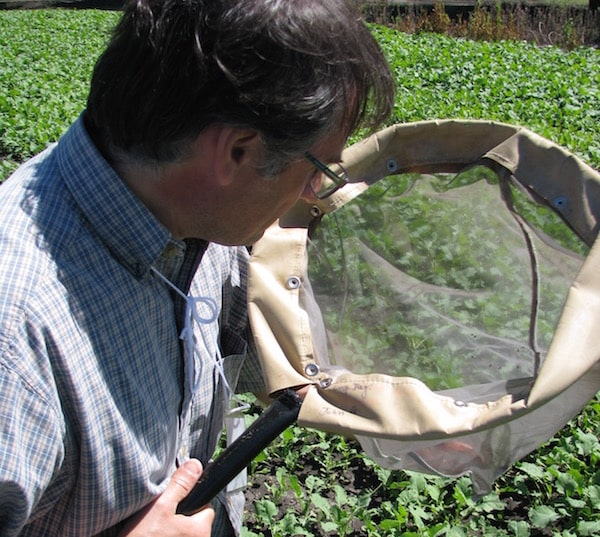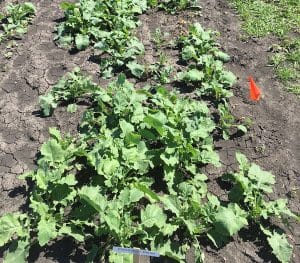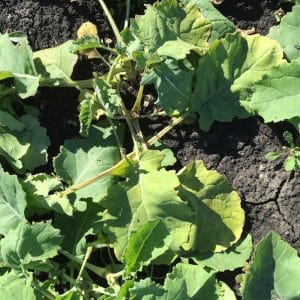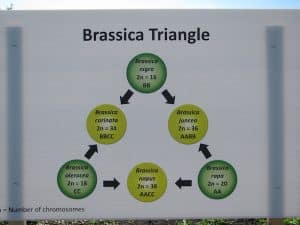Here are hot topics and key messages from canolaPALOOZA in Portage la Prairie, Manitoba, on June 21.
Stand establishment. Not many farmers use thousand kernel weight (TKW) when setting their seeding rates, yet if they stick with the 5 lb./ac. seeding rate, a seed lot with a TKW of 3g will provide twice as many seeds as a seed lot with a TKW of 6g. Farmers can use plant counts after emergence and then again at harvest to see if they’re achieving the minimum 5 plants per square foot required for canola to reach its yield potential. These counts may provide the incentive needed to consider TKW when setting seeding rates.

Insect management. By this stage of the season, flea beetle and cutworm risks are lower because crops are bigger and these two insects are in natural seasonal decline. Adult flea beetles have laid their eggs and are dying. Cutworms are pupating. We’re now moving toward sweep net timing for lygus and cabbage seedpod weevil.

Nutrient management. (1) Providing 10-20 lb./ac. of S will compensate for natural variability across a field at a cost of $5-$10 per acre. Ammonium sulphate is a plant-available and reliable choice. (2) Seed-placed fertilizer may be causing more harm than growers realize. Farmers may be happy with their stand but don’t know how good it could have been without seedlings losses to fertilizer toxicity or salt effect. (3) Farmers who cut fertilizer rates because of dry conditions at seeding may want to consider a top dress if yield potential has increased, especially with the relatively low cost of N fertilizer right now. Top-dressing Nitrogen should be done before the 5-leaf stage. Top dressing Sulphur can be done up to early flowering, but typically, earlier is better. Application before a rainfall is most beneficial.

Weed management. Rainy and windy days have forced some applications in less than ideal conditions, which can increase drift risk. Group 4 herbicide is often the worst for drift. Group 4s, especially the ester formulation, are highly volatile. In addition to normal drift in droplet form, they can also spread in a volatile vapour drift, which can move much farther. Amine formulations do not produce volatile vapours.
Disease management. While clubroot was the hot topic, the key general message is to use more than one strategy to control disease. Even though genetics can provide very good control, relying on genetics alone will shorten the useful life of that trait. Crop rotation is an important strategy to support genetic resistance.
Sprayer tech. Tom Wolf says the most important step is to decide whether the spray is warranted in the first place. That is why scouting is so important. The next most important decision is timing. You want to spray at the right time for best results. Nozzle choice and water volumes are less important than these first two decisions.
Soil pit. Mario Tenuta from the University of Manitoba talked about symbiotic relationships between mycorrhizae and plants. Canola does not need mycorrhizae to source phosphorus, which means mycorrhizae levels drop considerably when canola is grown. Since mycorrhizae are essential to flax and very beneficial for corn, pea and lentils, growing these crops immediately after canola may result in lower yields. However mycorrhizae levels rebound very well with one year of cereals. This emphasizes the benefit to having a cereal crop between canola and flax, peas, lentils and corn.

Brassica Triangle of U. This station demonstrated the six common brassica species grown around the world. The triangle was named after Nagaharu U, a Korean botanist. (Read more on the triangle.)
Harvest management. When asked, “What is the biggest cause of canola losses when combining?”, instructors at this station answered, “Driving too fast.”
Keep It Clean. This station used a super-B truck to demonstrate what one part per million and one part per billion look like. One part per million is 9,000 seeds — or about a quarter cup’s worth — in a 42-tonne super-B load. One part per billion is 9 seeds in a super-B. This clearly shows that one farm making decisions to apply unaccepted products or use off-label practices could hurt the reputation of Canada’s whole agriculture industry. More on Keep It Clean practices.

